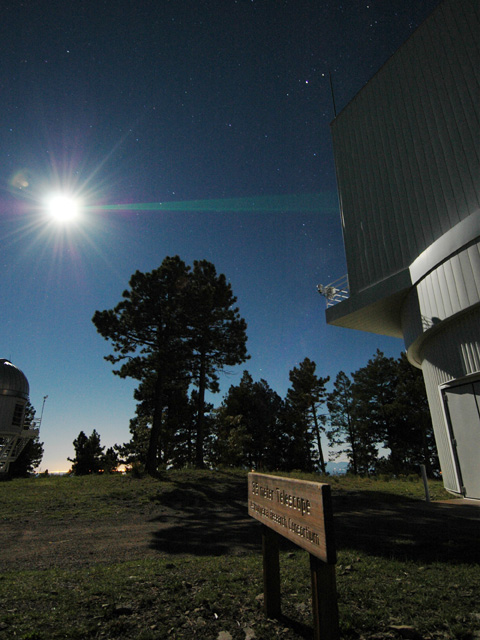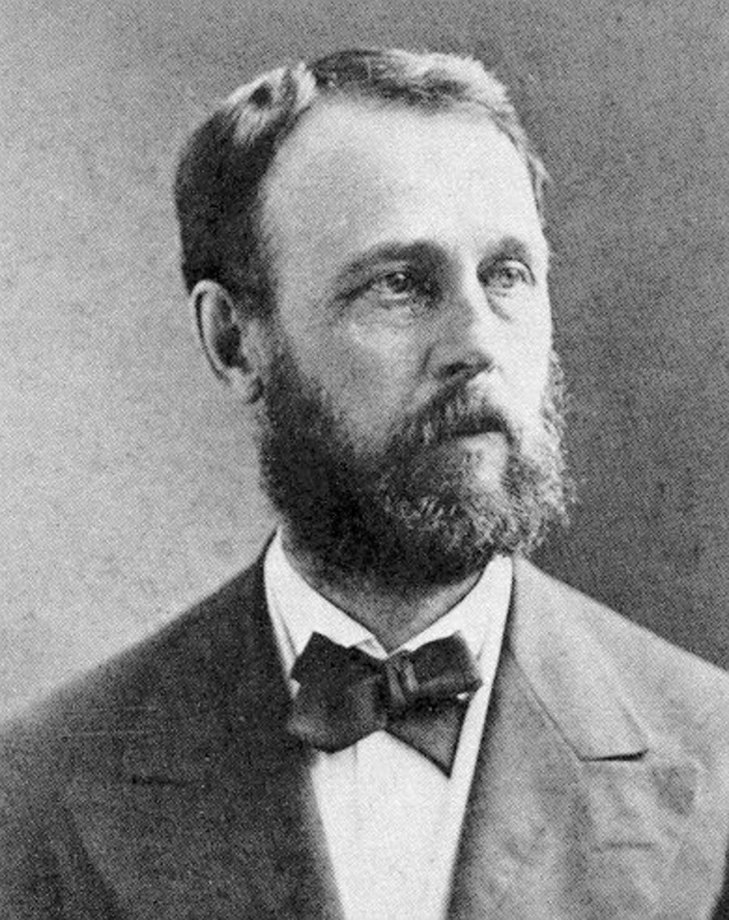|
2007 WD5
is an Apollo asteroid some in diameter and a Mars-crosser asteroid first observed on 20 November 2007, by Andrea Boattini of the Catalina Sky Survey. Early observations of caused excitement amongst the scientific community when it was estimated as having as high as a 1 in 25 chance of colliding with Mars on 30 January 2008. However, by 9 January 2008, additional observations allowed NASA's Near Earth Object Program (NEOP) to reduce the uncertainty region resulting in only a 1-in-10,000 chance of impact. most likely passed Mars at a distance of 6.5 Mars radii. Due to this relatively small distance and the uncertainty level of the prior observations, the gravitational effects of Mars on its trajectory are unknown and, according to Steven Chesley of NASA's Jet Propulsion Laboratory Near-Earth Object program, is currently considered 'lost' (see lost asteroids). Discovery The asteroid was discovered on 20 November 2007 by Andrea Boattini of the NASA-funded Catalina Sky Su ... [...More Info...] [...Related Items...] OR: [Wikipedia] [Google] [Baidu] |
Asteroid
An asteroid is a minor planet—an object larger than a meteoroid that is neither a planet nor an identified comet—that orbits within the Solar System#Inner Solar System, inner Solar System or is co-orbital with Jupiter (Trojan asteroids). Asteroids are rocky, metallic, or icy bodies with no atmosphere, and are broadly classified into C-type asteroid, C-type (carbonaceous), M-type asteroid, M-type (metallic), or S-type asteroid, S-type (silicaceous). The size and shape of asteroids vary significantly, ranging from small rubble piles under a kilometer across to Ceres (dwarf planet), Ceres, a dwarf planet almost 1000 km in diameter. A body is classified as a comet, not an asteroid, if it shows a coma (tail) when warmed by solar radiation, although recent observations suggest a continuum between these types of bodies. Of the roughly one million known asteroids, the greatest number are located between the orbits of Mars and Jupiter, approximately 2 to 4 astronomical unit, AU ... [...More Info...] [...Related Items...] OR: [Wikipedia] [Google] [Baidu] |
Tucson
Tucson (; ; ) is a city in Pima County, Arizona, United States, and its county seat. It is the second-most populous city in Arizona, behind Phoenix, Arizona, Phoenix, with a population of 542,630 in the 2020 United States census. The Tucson metropolitan statistical area had 1.043 million residents in 2020 and forms part of the Tucson-Nogales combined statistical area. Tucson and Phoenix anchor the Arizona Sun Corridor. The city is southeast of Phoenix and north of the United States–Mexico border It is home to the University of Arizona. Major incorporated suburbs of Tucson include Oro Valley, Arizona, Oro Valley and Marana, Arizona, Marana northwest of the city, Sahuarita, Arizona, Sahuarita south of the city, and South Tucson, Arizona, South Tucson in an enclave south of downtown. Communities in the vicinity of Tucson (some within or overlapping the city limits) include Casas Adobes, Arizona, Casas Adobes, Catalina Foothills, Arizona, Catalina Foothills, Flowing Wells, A ... [...More Info...] [...Related Items...] OR: [Wikipedia] [Google] [Baidu] |
Apache Point Observatory
The Apache Point Observatory (APO; obs. code: 705) is an astronomical observatory located in the Sacramento Mountains in Sunspot, New Mexico, United States, approximately south of Cloudcroft. The observatory is operated by New Mexico State University (NMSU) and owned by the Astrophysical Research Consortium (ARC). Access to the telescopes and buildings is private and restricted. History The ARC was formed in 1984 with the goal of building the 3.5 m telescope. It originally consisted of five institutions: New Mexico State University, University of Washington, University of Chicago, Princeton University, and Washington State University, some of which have since withdrawn. Several additional organizations have joined over time: Johns Hopkins University, University of Colorado, University of Virginia, Georgia State University, University of Oklahoma, University of Wyoming, and Brigham Young University. Funding for the 3.5 m and 0.5 m telescopes comes from the co ... [...More Info...] [...Related Items...] OR: [Wikipedia] [Google] [Baidu] |
Sloan Digital Sky Survey
The Sloan Digital Sky Survey or SDSS is a major multi-spectral imaging and spectroscopic redshift survey using a dedicated 2.5-m wide-angle optical telescope at Apache Point Observatory in New Mexico, United States. The project began in 2000 and was named after the Alfred P. Sloan Foundation, which contributed significant funding. A consortium of the University of Washington and Princeton University was established to conduct a redshift survey. The Astrophysical Research Consortium (ARC) was established in 1984 with the additional participation of New Mexico State University and Washington State University to manage activities at Apache Point. In 1991, the Sloan Foundation granted the ARC funding for survey efforts and the construction of equipment to carry out the work. Background At the time of its design, the SDSS was a pioneering combination of novel instrumentation as well as data reduction and storage techniques that drove major advances in astronomical observations, dis ... [...More Info...] [...Related Items...] OR: [Wikipedia] [Google] [Baidu] |
Deimos (moon)
Deimos (; astronomical naming conventions#Natural satellites, systematic designation: Mars II) is the smaller and outer of the two moons of Mars, natural satellites of Mars, the other being Phobos (moon), Phobos. Deimos has a mean radius of and takes 30.3 hours to orbit Mars. Deimos is from Mars, much farther than Mars's other moon, Phobos. It is named after Deimos (deity), Deimos, the Greek mythology, Ancient Greek god and personification of dread and terror. Discovery and etymology Deimos was discovered by Asaph Hall at the United States Naval Observatory in Washington, D.C., on 12 August 1877, at about 07:48 Coordinated Universal Time, UTC. Hall, who also discovered Phobos (moon), Phobos shortly afterwards, had been specifically searching for Martian moons at the time. The moon is named after Deimos (deity), Deimos, a figure representing fear, dread in Greek mythology. The name was suggested by academic Henry George Madan, Henry Madan, who drew from Book XV of the ... [...More Info...] [...Related Items...] OR: [Wikipedia] [Google] [Baidu] |
Precovery
In astronomy, precovery (short for pre-discovery recovery) is the process of finding the image of a celestial object in images or photographic plates predating its discovery, typically for the purpose of calculating a more accurate orbit. This happens most often with minor planets, but sometimes a comet, a dwarf planet, a natural satellite, or a star is found in old archived images; even exoplanet precovery observations have been obtained. "Precovery" refers to a pre-discovery image; "recovery" refers to imaging of a body which was lost to our view (as behind the Sun), but is now visible again ''(also see lost minor planet and lost comet)''. Orbit determination requires measuring an object's position on multiple occasions. The longer the interval between observations, the more accurately the orbit can be calculated; however, for a newly discovered object, only a few days' or weeks' worth of measured positions may be available, sufficient only for a preliminary (imprecise) orbit ... [...More Info...] [...Related Items...] OR: [Wikipedia] [Google] [Baidu] |
Astronomical Unit
The astronomical unit (symbol: au or AU) is a unit of length defined to be exactly equal to . Historically, the astronomical unit was conceived as the average Earth-Sun distance (the average of Earth's aphelion and perihelion), before its modern redefinition in 2012. The astronomical unit is used primarily for measuring distances within the Solar System or around other stars. It is also a fundamental component in the definition of another unit of astronomical length, the parsec. One au is approximately equivalent to 499 light-seconds. History of symbol usage A variety of unit symbols and abbreviations have been in use for the astronomical unit. In a 1976 resolution, the International Astronomical Union (IAU) had used the symbol ''A'' to denote a length equal to the astronomical unit. In the astronomical literature, the symbol AU is common. In 2006, the International Bureau of Weights and Measures (BIPM) had recommended ua as the symbol for the unit, from the French ... [...More Info...] [...Related Items...] OR: [Wikipedia] [Google] [Baidu] |
Apparent Magnitude
Apparent magnitude () is a measure of the Irradiance, brightness of a star, astronomical object or other celestial objects like artificial satellites. Its value depends on its intrinsic luminosity, its distance, and any extinction (astronomy), extinction of the object's light caused by interstellar dust along the sightline, line of sight to the observer. Unless stated otherwise, the word ''magnitude'' in astronomy usually refers to a celestial object's apparent magnitude. The magnitude scale likely dates to before the ancient Ancient Greek astronomy#Astronomy in the Greco-Roman and Late Antique eras, Roman astronomer Ptolemy, Claudius Ptolemy, whose Star catalogue, star catalog popularized the system by listing stars from First-magnitude star, 1st magnitude (brightest) to 6th magnitude (dimmest). The modern scale was mathematically defined to closely match this historical system by Norman Robert Pogson, Norman Pogson in 1856. The scale is reverse logarithmic scale, logarithmic: ... [...More Info...] [...Related Items...] OR: [Wikipedia] [Google] [Baidu] |
Light Pollution
Light pollution is the presence of any unwanted, inappropriate, or excessive artificial Visible spectrum, lighting. In a descriptive sense, the term ''light pollution'' refers to the effects of any poorly implemented lighting sources, during the day or night. Light pollution can be understood not only as a phenomenon resulting from a specific source or kind of pollution, but also as a contributor to the wider, collective impact of various sources of pollution. Although this type of pollution can exist throughout the day, its effects are magnified during the night with the contrast of the sky's darkness. It has been estimated that 83% of the world's people live under light-polluted skies and that 23% of the world's land area is affected by skyglow. The area affected by artificial illumination continues to increase. A major side effect of urbanization, light pollution is blamed for compromising health, disrupting ecosystems, and spoiling aesthetic environments. Studies show that ur ... [...More Info...] [...Related Items...] OR: [Wikipedia] [Google] [Baidu] |
Naked Eye
Naked eye, also called bare eye or unaided eye, is the practice of engaging in visual perception unaided by a magnification, magnifying, Optical telescope#Light-gathering power, light-collecting optical instrument, such as a telescope or microscope, or eye protection. In astronomy, the naked eye may be used to observe celestial events and astronomical object, objects visible without equipment, such as conjunction (astronomy), conjunctions, passing comets, meteor showers, and the brightest asteroids, including 4 Vesta. Sky lore and various tests demonstrate an impressive variety of phenomena visible to the unaided eye. Basic properties Some basic properties of the human eye are: *Quick autofocus from distances of 25 cm (young people) to 50 cm (most people 50 years and older) to infinity. *Angular resolution: about 1 arcminute, approximately 0.017° or 0.0003 radians, which corresponds to 0.3 m at a 1 km distance. *Field of view (FOV): simultaneous visual ... [...More Info...] [...Related Items...] OR: [Wikipedia] [Google] [Baidu] |
Apparent Magnitude
Apparent magnitude () is a measure of the Irradiance, brightness of a star, astronomical object or other celestial objects like artificial satellites. Its value depends on its intrinsic luminosity, its distance, and any extinction (astronomy), extinction of the object's light caused by interstellar dust along the sightline, line of sight to the observer. Unless stated otherwise, the word ''magnitude'' in astronomy usually refers to a celestial object's apparent magnitude. The magnitude scale likely dates to before the ancient Ancient Greek astronomy#Astronomy in the Greco-Roman and Late Antique eras, Roman astronomer Ptolemy, Claudius Ptolemy, whose Star catalogue, star catalog popularized the system by listing stars from First-magnitude star, 1st magnitude (brightest) to 6th magnitude (dimmest). The modern scale was mathematically defined to closely match this historical system by Norman Robert Pogson, Norman Pogson in 1856. The scale is reverse logarithmic scale, logarithmic: ... [...More Info...] [...Related Items...] OR: [Wikipedia] [Google] [Baidu] |










